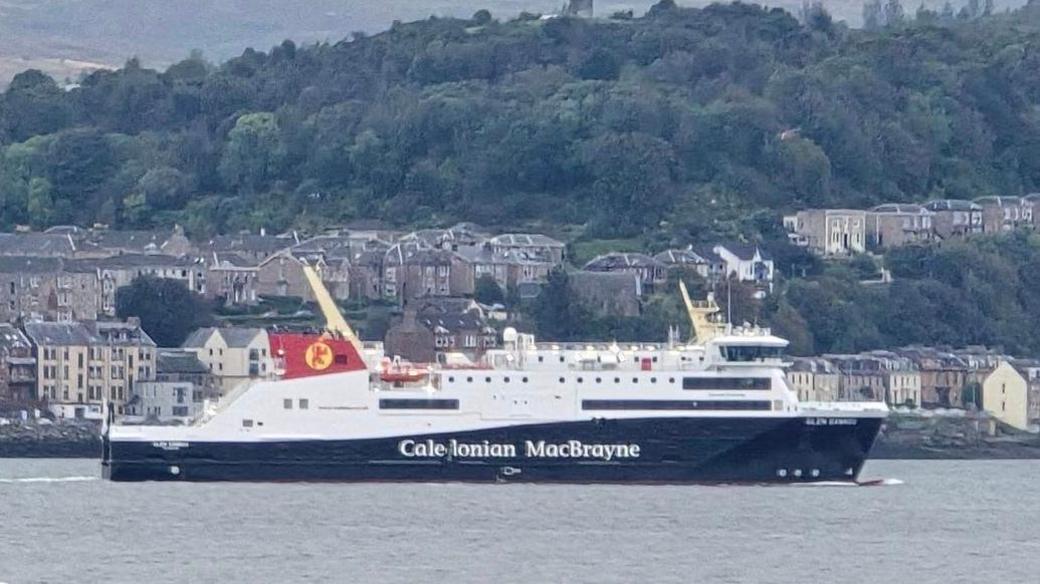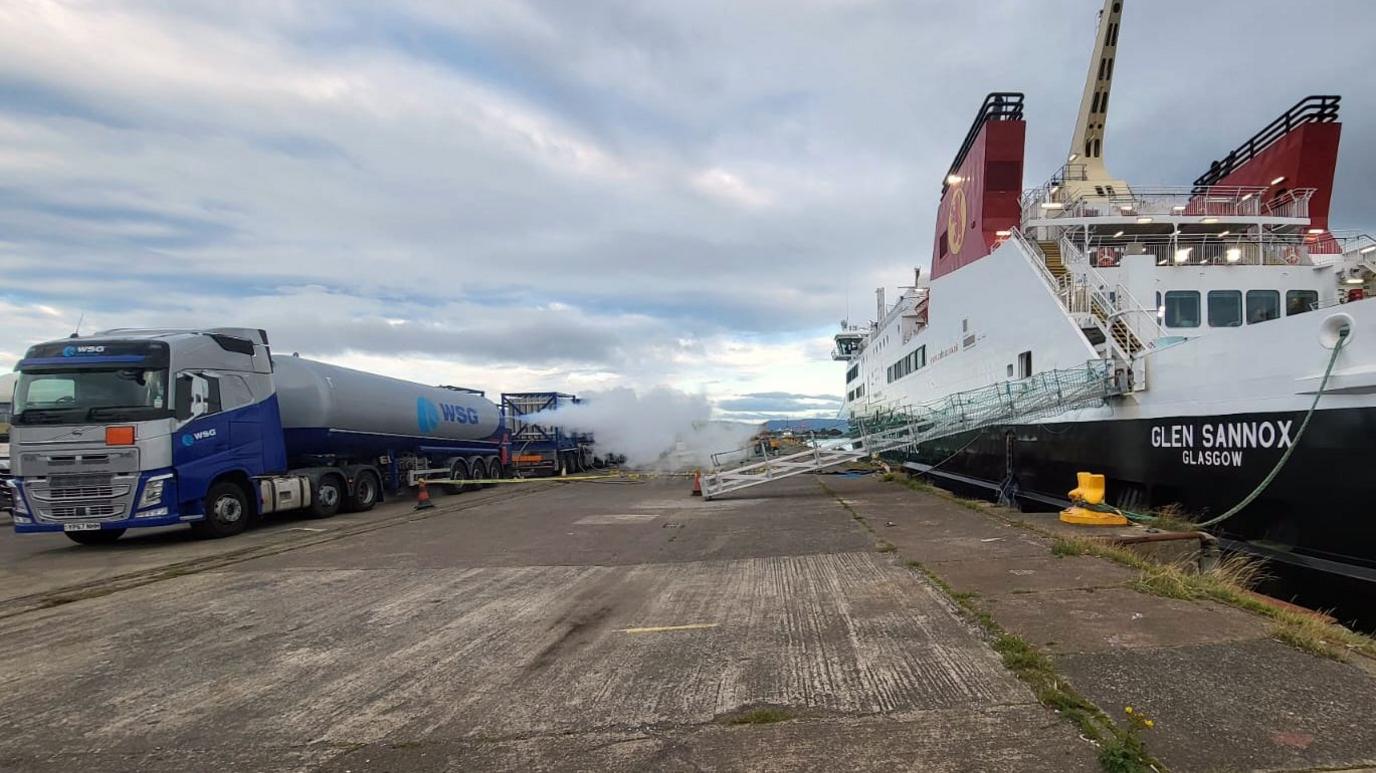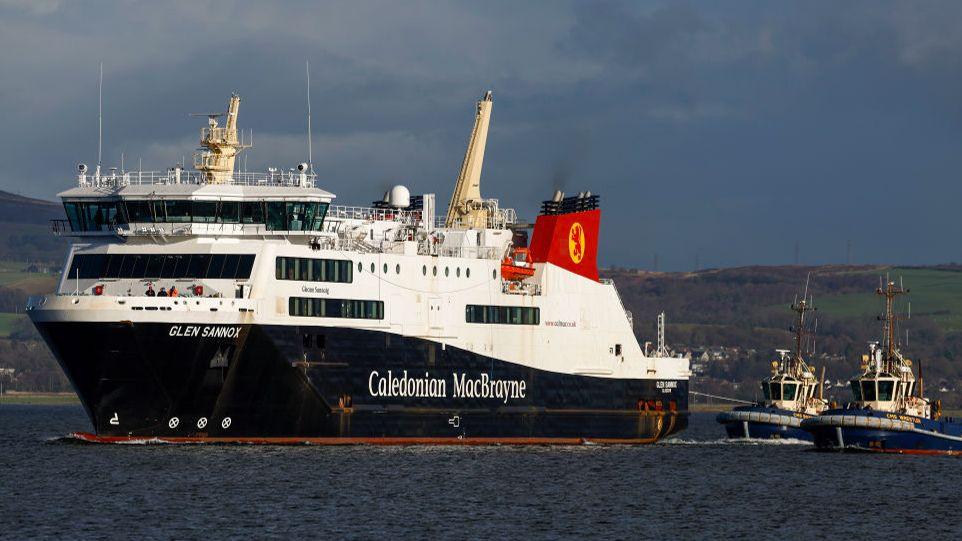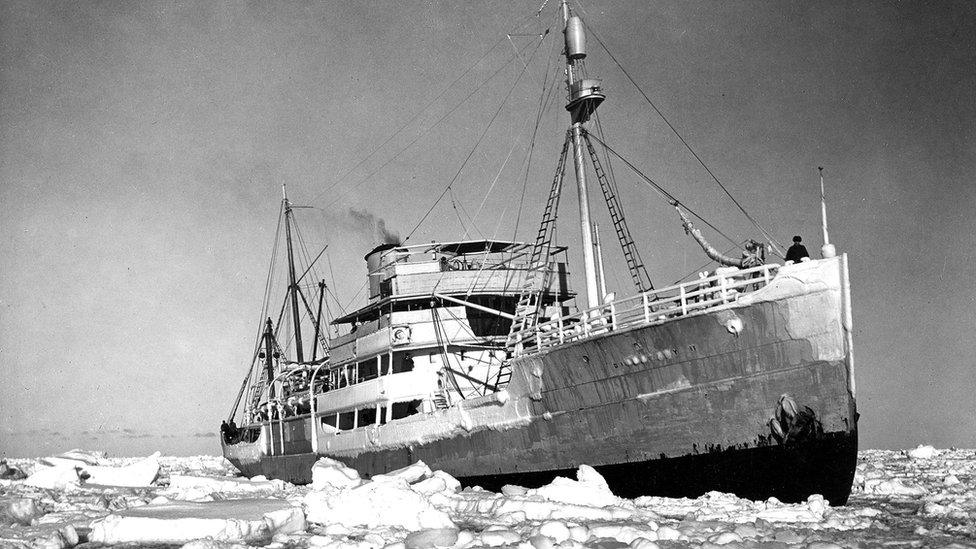Delayed Glen Sannox ferry sets sail for crucial sea trials

Glen Sannox heads downriver for sea trials which will test its gas-powered propulsion systems before handover
- Published
New CalMac ferry Glen Sannox has begun some of its final sea trials before being handed over by the Ferguson shipyard.
The long-delayed ship is being put through its paces using liquefied natural gas (LNG) to power its engines for the first time.
Despite a last-minute hitch that forced a further two-week delay, the ship was last week loaded with the fuel, which needs to be kept at minus 162C.
The ship, currently scheduled for delivery by mid-October, sounded its horn as it passed the CalMac headquarters in Gourock.
The ship underwent its first successful sea trials earlier this year - but only running on conventional fuel because the LNG systems had yet to be commissioned.
Ferguson Marine said the latest tests had got off to a good start, with the ship accelerating to 12 knots as it passed the Isle of Cumbrae.
Over the coming days the trials will evaluate manoeuvrability, acceleration and whether it can reach its contracted speed of 16.5 knots.
These will be followed by "owner's acceptance trials" with ferry procurement body CMAL, beginning on 30 September, and several weeks of crew familiarisation trials by operator CalMac before it carries its first passengers.
The ship was originally due for delivery in 2018, but has been beset by a series of problems including design difficulties and an acrimonious contractual dispute between CMAL and the shipyard's former owners.

Super-cooled LNG fuel was loaded onto Glen Sannox at Inchgreen Marine Park last week
Glen Sannox and its sister ship Glen Rosa are the first ferries ever built in the UK capable of running on LNG as well as conventional marine gas oil.
But the technology has added a lot of extra complexity for the Port Glasgow shipyard, and many of the delays have been linked to the LNG systems.
One former Ferguson Marine boss described the challenges of packing the equipment into the tight spaces as more complex than designing a Navy warship.
The most recent delay was caused by difficulties achieving low enough temperatures for the fuel to be loaded at Greenock's Inchgreen Marine Park, where Glen Sannox has been moored.
Earlier this week, the shipyard announced that after four-and-a-half days of cooling it had successfully completed the refuelling operation.
Andrew Milligan, head of engineering at Ferguson Marine, said: "The successful LNG bunkering is a highly significant milestone as it’s the first time it has ever been done in the UK.
"It was a complicated process which required significant safety protocols to be put in place.
"We experienced some unexpected challenges around this process and, unfortunately it has had a knock-on effect to the handover schedule."
Methane slip
The main benefit of LNG fuel is that it is seen as cleaner burning, releasing fewer pollutants such as nitrous and sulphur oxides.
The engines also emit up to 25% less carbon dioxide when running on LNG although some have questioned the green credentials of the technology.
There is a risk of "methane slip" - the release of unburnt gas during certain operations - and methane is itself a particularly harmful greenhouse gas.
The LNG fuel will also have to be imported from Qatar and driven to Scotland from Kent in south east England using diesel road tankers once or twice a week.
The plan is eventually to have dedicated fast LNG refuelling facilities built at the ship's main harbour at Ardrossan, but plans to redevelop the port have stalled.
Glen Sannox will initially sail to Arran from Troon instead, and be refuelled directly from road tankers.
Sister ship Glen Rosa is due for delivery next year - and four slightly smaller ferries using more conventional propulsion systems are being built in Turkey.
Related topics
- Published20 April 2024

- Published12 September 2024

- Published26 November 2023
